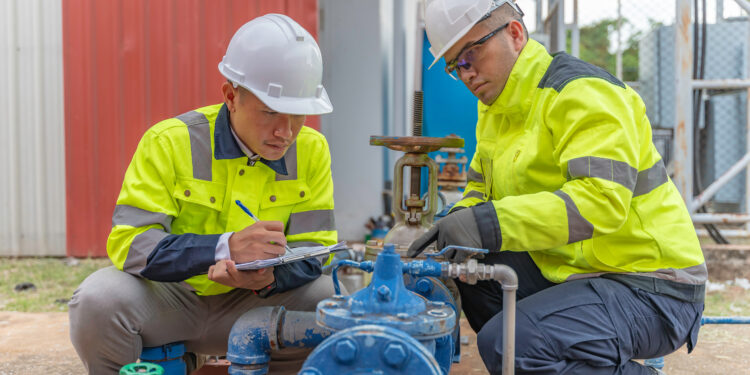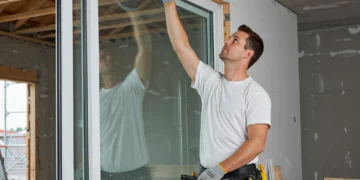Water systems are expected to perform without problems in building premises or residential properties. Most people don’t give a second thought to what flows from the tap. It’s assumed to be safe for drinking, cooking, and bathing. But little do you know, even modern plumbing can be vulnerable to contaminants, and the signs aren’t always obvious.
One of the less visible but significant threats is backflow. As the name indicates, it happens when water flows in the wrong direction through a system. This lets pollutants from external sources enter the potable water supply. And this is something homeowners or businesses can’t spot without proper training or tools. That’s when professional backflow testing services can be of great assistance.
They have the expertise to keep your water supply safe. Here are the things certified backflow specialists can help with:
Conduct an Inspection to Identify Backflow Issues
Before any test begins, experts carry out a full inspection of your plumbing system. This helps uncover any hidden issues that could increase the chance of backflow.
Generally, backflow usually happens under two main conditions:
Back-Siphonage
This occurs when the pressure in the main water line suddenly drops, like during a water main break or when firefighters use hydrants nearby. That drop can create a suction effect that pulls dirty water back into the clean supply. Something as simple as a garden hose left in a pool can pose a serious problem in this case.
Back-Pressure
This is the opposite. It happens when the pressure inside a building’s plumbing is stronger than the main supply line. This is common in places with pumps, boilers, or elevated tanks. If that force isn’t kept in check, it can shove contaminated water into the clean system.
A reliable backflow testing service in Lakeway or your local area knows how to respond to both conditions. For back-siphonage, they’ll look for outdated or poorly placed hose bibs, open tanks, or fixtures that sit below flood level.
Regarding back-pressure, they pay attention to internal systems like heating loops or industrial machinery. These can quietly create higher forces on the customer side, especially when pumps or thermal expansion are involved.
This step ensures both types of backflow conditions are covered. In return, plumbing specialists can install the right protection before trouble starts.
Perform Device Testing
Backflow prevention devices such as reduced pressure zone (RPZ) assemblies, double check valves, and pressure vacuum breakers are mechanical by design. Their primary job is to keep clean water from mixing with anything it shouldn’t. But like any equipment, they can fail over time due to wear, debris buildup, or shifting water pressure.
A backflow service professional uses specialized tools to run standardized tests. They connect gauges, open test ports, and monitor how the device responds to pressure. Then, they take readings to see if everything is working smoothly. Even a slight drop in pressure or a delayed valve response can indicate a malfunction.
Some backflow devices are designed to release water when they fail, while others are meant to stay sealed to maintain system integrity. If the device doesn’t pass the test, the technician will pinpoint the exact issue. Based on their findings, they may recommend adjustments, repairs, or replacements of faulty parts to restore proper function.
Prevent Health Hazards
The consequences of cross-contamination can be severe, especially when unwanted substances, like fertilizers or sewage, enter the clean water supply. In 2022, around 1.7 billion of global population were drinking water from sources tainted with fecal matter. This exposure puts people at risk of waterborne diseases and serious health problems.
In many cases, it doesn’t take much. A single pressure shift in the line or a minor valve failure can allow pollutants to sneak in. And most of the time, no one notices until someone gets sick.
To counter this, backflow prevention services act as a safety barrier. Part of the testing process involves checking that the plumbing system holds steady. That means there are no weak points or pressure imbalances.
Another thing to remember is that backflow devices should be tested annually. That’s the ideal schedule for both businesses and residential homes.
Maintain Water Safety During Construction and Renovations
Backflow isn’t only a concern in completed structures. New buildings constructions, system upgrades, and home renovations can all introduce potential cross-connections.
A professional technician often works alongside construction crews and engineers during these phases. Their goal is to ensure that backflow prevention is factored into design and installation.
The technician will evaluate whether the new layouts provide adequate protection. They make sure devices are installed in the right locations. Once everything’s operational, they test the assemblies to verify they’re working properly.
This proactive oversight halts unsafe systems before they go live. It also ensures that future occupants have access to potable water from day one.
Closing Thoughts
Backflow testing isn’t something most people think about, but it quietly guards the water we use every day. Keeping your water supply safe starts with awareness and continues through regular testing and professional support.
Don’t wait for something to go wrong before giving it a thought. Make it part of your routine maintenance. It’s a simple step that protects your home or building, your health, and everyone who relies on clean water.












